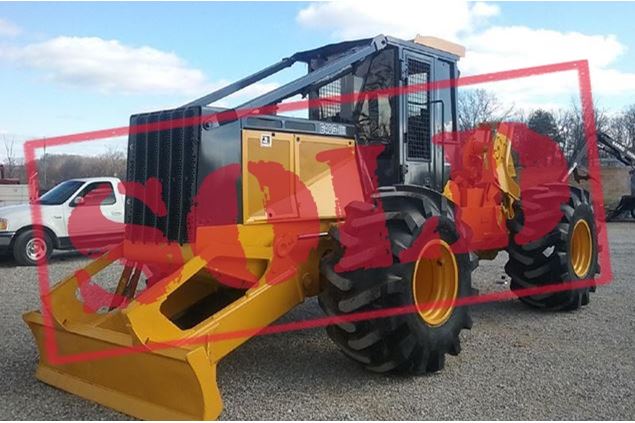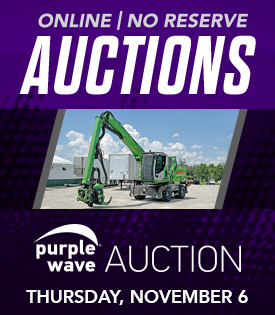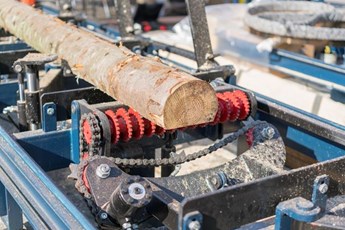The-Basics-How-To-Sell-Your-Equipment

Looking to upgrade your equipment, but need to sell your skidder, sawmill, or pallet nailer first? Or maybe you acquired a few items for a specific job that need to be liquidated, but you aren’t sure what to do? Truth is, there are many different ways, from listing it on LumbermenOnline.com to sitting it out by the road. Each way can fit different types of people and have their own place in the market, but carry pros and cons as well. Assuming you're not one of those lucky guys that are always approached by a deep pocketed offer to help you part ways, here are the main four options in no particular order:
Auctions
Pros - Assuming the process goes well it's a "quick sale." You have a defined date of item being liquidated, therefore, removes uncertainty. Auction companies have an interest in your items selling for high value and foot the bill for most of the promotion around the sale.
Cons - Uncontrolled variables including attendance on auction date due to outside factors, previous items sold, and inability to display equipment’s ability (if applicable). Additionally, other risks are items not exceeding reserve and having to pay a stocking fee, auctioneer’s fees can become very lofty with expensive equipment, transportation of equipment to and from auction, just to name a few.
Who does this option work for? Sellers who have numerous items to liquidate, end of business liquidation, or those who want an exact date of sale to plan accordingly.
Brokers
Pros - There is little time invested by the equipment owner. Generally speaking, there are no fees if your equipment doesn't sell. Utilizing a wide range of contacts from the brokering company. Good brokers are experts at selling equipment, they’ve sold 100s of items, and your item will be nothing they can’t handle.
Cons - The most common percent of fees for brokered items is 10% (moving the decimal one place on $100,000 = $10,000). Many brokers have numerous clients and many obligations, you could potentially be one of 100 -200 customers they’re servicing at a particular time. You will not directly know the interest of your equipment to the market and could make for a long selling process. Bad brokers. There are many reputable brokering companies that are worth 10% or more of any item, but there are just enough brokers that talk the buyer up and the seller down to give everyone a bad taste. Not sure where to start looking for a dependable contact to represent your equipment, check out our Online Edition for a solid line up.
Who does this option work for? Equipment owners who would like an expert to act on their behalf, while saving time that takes away from what their everyday responsibilities.
Marketplaces, i.e., LumbermenOnline.com
Pros - Direct control of entire selling process, from price, terms, and transportation. No pressure or obligation to continue to sell your equipment, if the decision is reverted, for example, a new job gets pushed through and that equipment is now needed. Selling your equipment directly carries the minimum number of people involved, by default will simplify the process. Sellers will avoid the previously mentioned high fees versus brokers or auction companies. Solid marketplaces and buy/sell/trade outlets will advise you on tips to help make the process go as smoothly as possible. Advertising in outlets, like LumbermenOnline.com, get your items in front of all potential buyers, including dealers, other brokers, and end-users.
Cons – Selling your own equipment can potentially be time-consuming by taking calls, following up, showing equipment, etc. Finding a reasonable asking price can be cumbersome in some circumstances, not all machines are equal - however, your account representative can help advise you on a target price. Just like brokers, selecting valuable outlets to use can be risky – focus on similar equipment listed (if there’s just one or two like items, you’re in the wrong spot), gauge their online services, 84% of adults use the internet, and reach out to past advertisers for reference, even if their item didn’t sell, they can give insight on the process. Prepaying for services, that is any less than 100% success rate always, carries a risk of being out the advertising cost. Logistics of a potential buyer can be a headache.
Who does this option work for? People who want to sell their own equipment efficiently, control the process, retain the selling amount in full and get their equipment in front of as many prospective buyers as possible. Get started now!
FREE! - Local/Roadside/Craigslist/Facebook
Pros – By far the cheapest option to utilize. 90% of potential buyers will be local, therefore, transportation of equipment won’t be a hurdle. You’re still selling the equipment yourself, so you will have complete control of selling process. No pressure from others in the selling process make for a stress-free experience.
Cons – If this option worked more often than not, this article would be two sentences long and the above options wouldn’t exist. Furthermore, low number of eyes on your equipment reduces response greatly. Let me explain, parking a Ford F-150 on a busy highway is a good idea. Everyone that drives by is a potential customer because they’re a driver. However, not every driver has a need for a used feller buncher or other heavy equipment. This route is a time killer, if your equipment is parked on the road for 2 months with no interest, that’s two months of no use and time that could’ve been advertised on a larger scale.
Who does this option work for? Sellers who aren’t in a hurry for any reason, don’t need to use the equipment during the selling process, and have a solid local market for their equipment for sale.
Overview
All options have ups and downs, that’s why they all exist. Your goals of selling your equipment will help determine which option fits you. Overall, selling your equipment isn’t hard, like many things, you just have to start. Many potential sellers put off liquidating tens of thousands of dollars in equipment because it seems overwhelming or time-consuming. However, that equipment is at its peak value today (assuming no upgrades or repairs are needed) and there’s a cost even for items that are paid for and not used. If I were selling my equipment, I’d use a couple options that are able to ensure I got my item in front of as many potential buyers as possible. The real winner here, is the buyer of your equipment – you just have to find him!
.gif)



